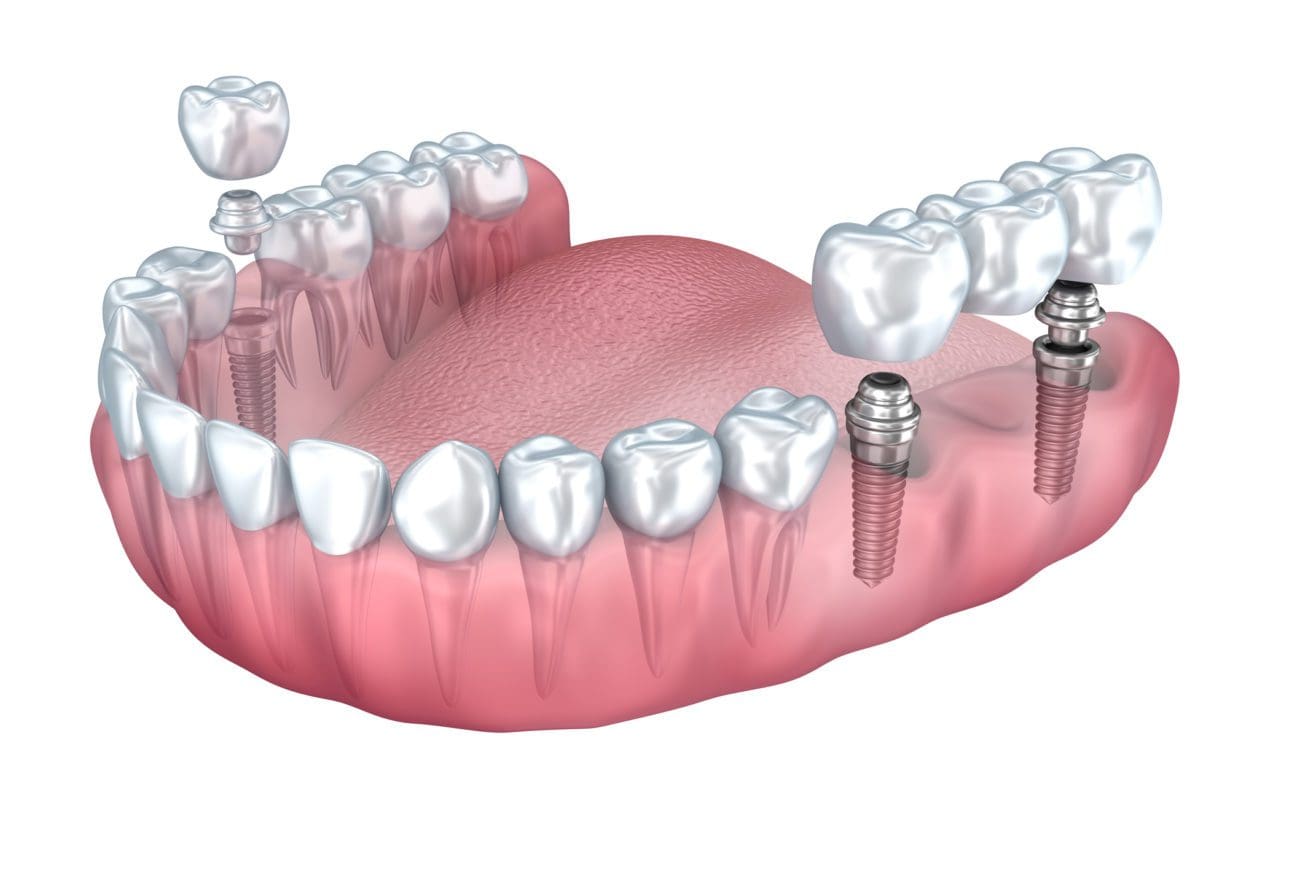Not known Factual Statements About Dental Sense
The Definitive Guide to Dental Sense
Table of ContentsThe 8-Second Trick For Dental SenseThe 7-Second Trick For Dental SenseAll About Dental SenseEverything about Dental Sense
are medical gadgets surgically dental implanted right into the jaw to restore an individual's ability to chew or their look. They provide support for fabricated (phony) teeth, such as crowns, bridges, or dentures. When a tooth is shed as a result of injury or condition, an individual can experience difficulties such as quick bone loss, faulty speech, or modifications to chewing patterns that result in discomfort.Dental implant systems include an oral implant body and dental implant abutment and might likewise consist of a joint addiction screw. Root canal procedure. The oral implant body is operatively inserted in the jawbone instead of the tooth's origin. The dental implant joint is usually affixed to the implant body by the abutment addiction screw and prolongs with gums into the mouth to support the connected synthetic teeth
(https://zenwriting.net/dentalsense1/nnlwgn0f4v)Structure of The Oral Implant System picking oral implants, speak with your dental copyright concerning the prospective advantages and risks, and whether you are a candidate for the treatment. Things to consider: Your overall health and wellness is an important consider establishing whether you are an excellent prospect for oral implants, exactly how long it will certainly take to heal, and how much time the dental implant might stay in area.
Smoking cigarettes may influence the healing process and decrease the lasting success of the implant. The recovery procedure for the dental implant body may take several months or longer, throughout which time you typically have a short-term abutment in area of the tooth. the dental implant procedure: Meticulously follow the dental health instructions given to you by your oral supplier.
The Definitive Guide to Dental Sense
Implant failing can lead to the need for one more medical treatment to deal with or replace the dental implant system. Recovers the capability to eat Brings back cosmetic appearance Helps maintain the jawbone from shrinking as a result of bone loss Maintains the health and wellness of the bordering bone and gums Helps maintain adjacent (nearby) teeth stable Improves top quality of life Damages to surrounding natural teeth during dental implant placement Injury to the surrounding tissues throughout surgery, such as sinus opening Injury throughout surgical treatment (for instance, crack of bordering jawbone) Poor function, such as seeming like the teeth do not attack together typically A feeling that the tooth is loose or twisting in location arising from an abutment screw loosening Implant body failure (looseness of the dental implant body) Bonuses due to systemic infection, which may be more probable in patients with unrestrained diabetes mellitus due to local infection in bone and gum tissues sustaining the dental implant body because of postponed recovery, which might be more probable in people that smoke Trouble cleansing the gum tissues around the implant, causing inadequate dental hygiene Neglected gum disease Post-surgical numbness because of nerve impingement or damage Constantly inform wellness treatment companies and imaging specialists that you have dental implants prior to any kind of magnetic vibration imaging (MRI) or x-ray procedures.
FDA is not familiar with any kind of damaging events reported for MRI or x-ray procedures with dental implants. Dental implants systems are usually made from materials that adhere to worldwide agreement standards of the International Organization for Standardization (ISO) or ASTM International. These requirements have details of what makes a risk-free material.

A dental implant is a framework that replaces a missing tooth. With screw-like gadgets, the cosmetic surgeon inserts an implant right into the jawbone, and it acts as an anchor for a fabricated tooth, called a crown.
See This Report on Dental Sense
Some people are not eligible for dental implant surgical procedure. It is for oral specialists to operate on individuals with: severe illnessuncontrollable metabolic diseasebone or soft tissue condition or infectionIf these problems are settled, an individual can have the surgical procedure. In, oral doctors avoid from operating on people with: If individuals with any one of the above go through oral implant surgical treatment, there is a higher risk of the implant failing.

Dental implant surgical treatment is a tailored procedure. It's not the exact same for everyone. The following gives a basic introduction of what you can expect your dental professional, dental doctor, periodontist or prosthodontist to do: Place the dental implant surgically. Give you time to heal. Affix the message and last crown, bridge or denture.
Next, your doctor will very carefully position the oral implant into your jaw. Lastly, your doctor will reposition your gum tissues and shut the laceration with stitches. If your dental implant is near the front of your mouth, your dental professional will make a temporary tooth for you to put on until you recover. That means, you will not have a space in your smile while you recuperate.
Unknown Facts About Dental Sense
Your copyright can inform you what to anticipate in your situation. During the healing phase, your jawbone must fuse to the oral implant. This procedure, called osseointegration, is important for stability and long-lasting success. This procedure can take anywhere from three to 9 months. Sometimes, it might take much longer.
When your implant heals, your dental practitioner can attach the abutment (tiny adapter blog post) and your last repair (crown, bridge or denture). This usually takes about one hour to complete and might need a 2nd small surgery. You should not really feel any pain throughout your oral implant treatment since your company will use medicine to numb your gums.